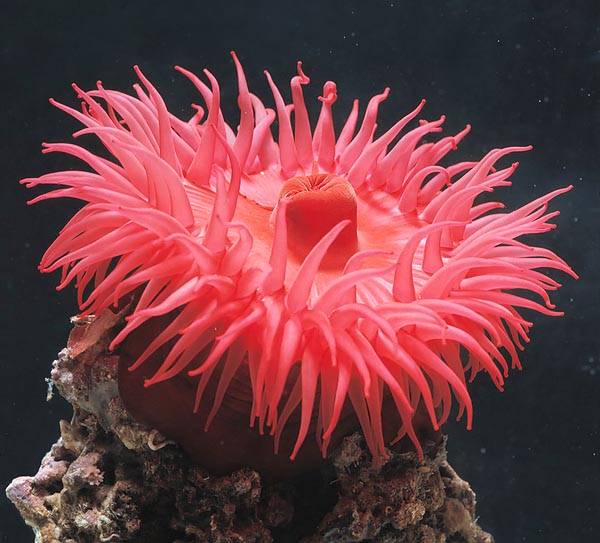
Classes
Cyphozoans, or "true jellies," and cubozoans, or "box jellies," are the two classes of cnidarians comprising the classic jellyfish; the main difference between them is that cubozoans have boxier-looking bells than scyphozoans, and are slightly faster. There are also hydrozoans and staurozoans, or stalked jellyfish, which are attached to the sea floor.
Hydrozoa

They show the phases of polyp and jellyfish alternately. They are generally small in size and they can be colonial or solitary. The siphonophores are included in this class. They are floating colonies of polyp individuals and jellyfish with great and abundant poisonous cells for self-defence which, in certain cases, can be lethal for people. The siphonophores form complex colonies of individuals specialising in different functions; some serve as the flotation organ, others for nutrition, defence or for feeling. Among the best-known species of siphonophores, are the by-the-wind sailor (Velella spirans) or the Portuguese man of war (Physalia physalis), which can produce painful burns for bathers, and even heart failure.

Cubozoa
A class with few representatives that some authors group together with the esciphozoa. They inhabit the waters of tropical and sub-tropical seas. These are the so-called box jellyfish or sea wasps. They have their umbrella in the form of a cube, with four sides. They have a powerful sting and they may cause death to a person in just a few minutes if he is not treated with an antidote.

Scyphozoa


This is the group of those known as true jellyfish. They are the great marine jellyfish, normally with a very short or even non-existent polyp phase. The following belong to this class: the moon jelly (Aurelia aurita) which is very common in the Mediterranean, the Rhizostoma pulmo which inhabits the Mediterranean and the Atlantic or the fried egg jellyfish (Cotylorhiza tuberculata). Some species are luminescent, such as the purple jellyfish or mauve stinger (Pelagia noctiluca), which can be really striking on a night-time dive. Its eight stinging tentacles can reach a diameter of ten metres when spread out.

Anthozoa


All the representatives of this class are polyps, which never adopt the jellyfish stage. It includes corals, madreporas, actinias and sea anemones. They are generally species of a beautiful colour. Some individuals live in isolation, such as the beadlet anemone (Actinia equina), some anemones and the colour tube anemone, (Cerianthus membranaceus), and others form colonies such as the corals or the red gorgonians (Paramuricea sp.)

